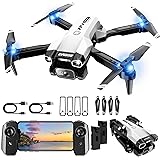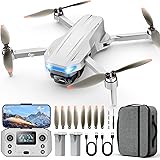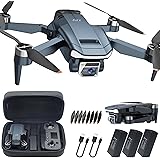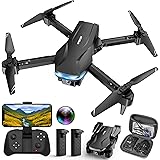The rapidly evolving landscape of professional drone operations presents complex challenges, particularly concerning endurance, payload versatility, and operational resilience in harsh environments. Conventional unmanned aerial systems (UAS) often fall short when mission parameters demand extended flight times, significant carrying capacity, or dynamic deployment capabilities, leading to compromised data acquisition or incomplete mission objectives. Addressing these critical pain points requires a new breed of drone technology engineered for uncompromised performance and reliability in the most demanding industrial and governmental applications.
As powerfully showcased in the accompanying video, the PRODRONE PDH-GS120 emerges as a revolutionary solution, meticulously designed to meet the rigorous demands of mission-critical tasks such as coastal guard surveillance, extensive pipeline inspections, and high-value aerial deliveries. This advanced industrial drone transcends the limitations of traditional platforms, offering a robust architecture that integrates cutting-edge avionics with a highly adaptive payload system. Its exceptional specifications position it as an indispensable asset for organizations seeking to elevate their operational efficiency and data integrity in challenging operational theaters.
Unrivaled Endurance for Extended Missions with the PRODRONE PDH-GS120
One of the most defining characteristics of the PRODRONE PDH-GS120 is its extraordinary endurance, boasting flight times of “2 hours or more,” which significantly surpasses the operational ceiling of many contemporary industrial drones. This extended flight capability translates directly into expanded mission ranges and prolonged surveillance windows, fundamentally altering the scope of what can be achieved with a single deployment. Such an impressive flight duration minimizes the logistical overhead associated with frequent battery swaps or refueling, thereby increasing mission continuity and overall operational cost-effectiveness.
For operations like extensive pipeline integrity management or wide-area maritime patrol, where vast distances must be covered, the PDH-GS120’s endurance is not merely a convenience but a strategic imperative. Persistent aerial presence allows for comprehensive data capture across expansive linear infrastructures or protracted monitoring of coastal borders against illicit activities. Moreover, the ability to remain airborne for extended periods enhances situational awareness during long-duration search and rescue missions, providing critical real-time intelligence to ground and sea teams. This performance benchmark sets a new standard for mission sustainability in critical applications.
Exceptional Payload Capacity for Multifaceted Operations
The PRODRONE PDH-GS120 is engineered with a substantial total payload capacity of 15kg (33lb), a feature that fundamentally redefines its utility across diverse industrial sectors. This significant carrying capability liberates operators from the constraints of single-sensor deployments, enabling the integration of multiple, sophisticated instruments concurrently. Such multi-sensor configurations drastically reduce the number of flights required for complex data acquisition tasks, thereby improving operational efficiency and reducing overall project timelines. Organizations can now deploy a single drone to gather various data types, from visual and thermal imagery to precise topographical scans, in one comprehensive mission.
The robust payload capacity ensures the drone can accommodate advanced sensor packages, including high-resolution Electro-Optical/Infra-Red (EO/IR) sensors for detailed visual and thermal analysis, and precision laser scanners for intricate 3D mapping and volumetric calculations. Furthermore, specialized payloads such as gas detection sensors for environmental monitoring, LiDAR systems for precise terrain modeling, or even communication relays for extending network coverage in remote areas become fully viable. This versatility transforms the PRODRONE PDH-GS120 into a truly adaptive platform, capable of executing a wide array of specialized missions without requiring a fleet of purpose-built drones.
High-Speed Performance and Unyielding Wind Resistance
Reaching a formidable maximum speed of 100km/h (62mph), the PRODRONE PDH-GS120 significantly enhances rapid deployment capabilities and extends the operational reach for time-sensitive missions. This speed allows for quicker transit to target areas, which is particularly beneficial in emergency response scenarios, such as rapidly assessing damage after a natural disaster or deploying crucial supplies. Furthermore, the ability to cover vast geographical areas at high velocity translates into greater efficiency for routine inspections and surveillance, reducing the time and resources allocated to monitoring expansive assets like power grids or agricultural lands.
Beyond sheer velocity, the PDH-GS120 is lauded for its “unrivaled performance even in high wind” conditions, a critical attribute for maintaining operational continuity in challenging weather environments. This superior wind resistance is a testament to its aerodynamic design and robust propulsion system, ensuring stable flight and precise data capture when other drones would be grounded. Operations in coastal regions, mountainous terrains, or offshore environments frequently encounter strong gusts, making this characteristic indispensable for ensuring mission success and safeguarding valuable equipment. The structural integrity and advanced flight control algorithms work in concert to maintain stability, providing operators with confidence in adverse conditions.
Versatile Payload Capability: EO/IR Sensors, Laser Scanners, and Beyond
The innate versatility of the PRODRONE PDH-GS120 is underscored by its support for a broad spectrum of “Versatile Payload Capability,” specifically highlighting EO/IR sensors and laser scanners. EO/IR sensor suites, typically comprising high-definition visual cameras and thermal imaging modules, are indispensable for applications ranging from search and rescue operations to security surveillance and environmental monitoring. The thermal component effectively penetrates darkness, smoke, or light foliage, revealing heat signatures that might indicate human presence, wildlife, or thermal anomalies in critical infrastructure.
Laser scanners, including advanced LiDAR systems, provide unparalleled capabilities for generating precise 3D models and elevation maps of terrain, structures, and industrial assets. These systems are crucial for detailed infrastructure inspection, volumetric calculations for mining or construction, and accurate digital twinning for asset management. The PDH-GS120’s capacity to seamlessly integrate and power such sophisticated instruments allows for comprehensive data collection in a single flight, supporting intricate analyses for civil engineering, forestry, and geological surveys. This modularity ensures the drone can be rapidly reconfigured to meet evolving mission requirements, maximizing its return on investment.
Autonomous Takeoff and Landing on Moving Vessels for Maritime Excellence
A standout feature of the PRODRONE PDH-GS120 is its advanced capability for “Auto Takeoff and Landing on Moving Vessels,” a complex and technically demanding feat that positions it as a premier asset for maritime operations. This functionality is critical for offshore wind farm maintenance, naval reconnaissance, maritime interdiction, and deep-sea research, where land-based deployment is impractical or impossible. Achieving reliable autonomous operation from a dynamic platform requires highly sophisticated real-time kinematic (RTK) GPS, precise inertial navigation systems (INS), and advanced vision-based navigation to compensate for vessel movement, pitch, roll, and yaw, even in varying sea states.
The ability to deploy and recover the PRODRONE PDH-GS120 from ships significantly extends the operational range for surveillance and data collection far beyond coastal boundaries. This eliminates the need for a dedicated drone pilot on the vessel for critical phases of flight, enhancing safety and reducing operational complexity for ship crews. Such automation also enables continuous monitoring across vast stretches of ocean for activities such as illegal fishing, piracy detection, or environmental spill tracking, drastically improving response times and efficiency for maritime enforcement agencies and commercial shipping companies alike.
Streamlined Operations with PD-GCS: Plan, Simulate, and Execute
Efficiency and user-friendliness are paramount in professional drone operations, and the PRODRONE PDH-GS120 delivers with its “Easy Operation with PD-GCS” (PRODRONE Ground Control System). This intuitive software platform empowers operators to seamlessly “Plan, Simulate, and Execute” complex missions, streamlining the entire operational workflow from initial setup to post-flight analysis. The PD-GCS provides a comprehensive suite of tools for mission planning, allowing operators to define flight paths, set waypoints, configure sensor parameters, and establish safety protocols with precision.
The simulation capability within the PD-GCS is particularly valuable, enabling operators to rehearse missions in a virtual environment before actual deployment. This reduces the risk of errors, optimizes flight parameters, and familiarizes pilots with challenging scenarios, ultimately enhancing safety and mission success rates. Once planned, the system facilitates the execution of flights with real-time telemetry, data logging, and comprehensive situational awareness, offering both manual control override and fully autonomous flight modes. This integrated approach ensures that even highly complex missions can be managed effectively and safely by a trained operator.
Precision Flight Control: Manual or Fully Automatic Capabilities
The PRODRONE PDH-GS120 offers unparalleled “Precision Flight Control,” providing operators with the flexibility of “Flight by Manual or Fully Automatic” modes to suit diverse mission requirements and pilot preferences. The manual control option provides experienced pilots with granular command over the drone’s movements, essential for intricate maneuvers in confined spaces or for dynamic, on-the-fly adjustments during critical inspections. This level of direct control is often preferred for tasks requiring immediate human judgment and finely tuned positioning, such as close-up visual inspections of structural defects or precise adjustments for optimal photographic angles.
Conversely, the fully automatic flight capabilities leverage advanced navigation algorithms and high-accuracy GPS/GNSS systems, often augmented with RTK or PPK corrections, to execute pre-programmed missions with sub-centimeter accuracy. This mode is ideal for repetitive tasks like large-area mapping, regular pipeline monitoring, or autonomous aerial delivery routes, ensuring consistent data acquisition and reducing pilot fatigue. The seamless transition between manual and automatic modes, coupled with robust failsafe mechanisms and obstacle avoidance systems, ensures reliable and precise operation for the PRODRONE PDH-GS120 across the full spectrum of its industrial applications.











